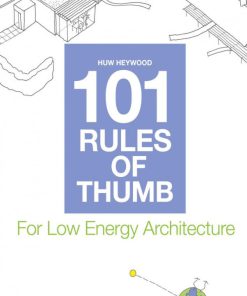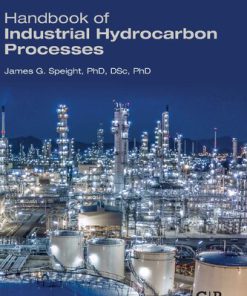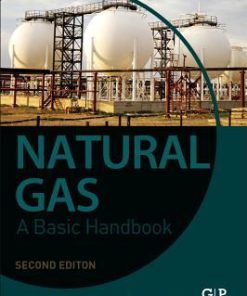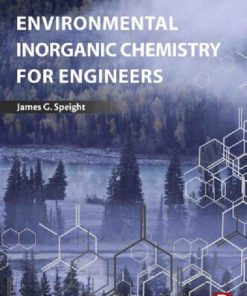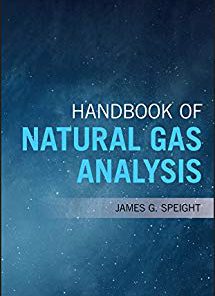Rules of thumb for petroleum engineers 1st Edition James 9781118595268
$50.00 Original price was: $50.00.$25.00Current price is: $25.00.
This completed downloadable of Rules of thumb for petroleum engineers 1st Edition James G. Speight
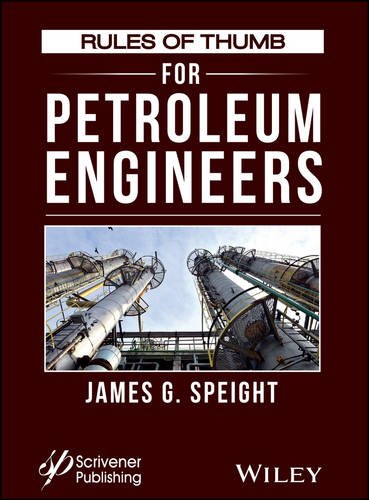
Instant downloaded Rules of thumb for petroleum engineers 1st Edition James G. Speight pdf docx epub after payment.
Product details:
- ISBN-13 : 9781118595268
- Author: James G. Speight
Finally, there is a one-stop reference book for the petroleum engineer which offers practical, easy-to-understand responses to complicated technical questions. This is a must-have for any engineer or non-engineer working in the petroleum industry, anyone studying petroleum engineering, or any reference library. Written by one of the most well-known and prolific petroleum engineering writers who has ever lived, this modern classic is sure to become a staple of any engineer’s library and a handy reference in the field.
Whether open on your desk, on the hood of your truck at the well, or on an offshore platform, this is the only book available that covers the petroleum engineer’s rules of thumb that have been compiled over decades. Some of these “rules,” until now, have been “unspoken but everyone knows,” while others are meant to help guide the engineer through some of the more recent breakthroughs in the industry’s technology, such as hydraulic fracturing and enhanced oil recovery.
Table of contents:
Abrasion 1
Absorption 3
Acid Gas Removal 5
Acid Gas Scrubbing 9
Acid Number 11
Acid Rain 13
Acid-Base Catalysts 15
Acidity and Alkalinity 17
Acidizing 19
Adsorption 21
Adsorption Isotherm 23
Adulteration 25
Air Emissions 27
Alcohol Blended Fuels 29
Alcohols 31
Alicyclic Hydrocarbons 33
Aliphatic Hydrocarbons 35
Alloys – Composition 37
Amine Absorber 39
Amine Condenser 41
Amine Washing 43
Ammonia 45
Aniline Point 47
Anticline 49
Antoine Equation 51
API Gravity 53
Aromatic Hydrocarbons 59
Asphalt Manufacture 61
Asphaltene Constituents 63
Associated Natural Gas 65
Atmospheric Equivalent Boiling Point 67
Auto-ignition Temperature 69
Barrel 71
Baumé Gravity 73
Benchmark Crude Oil 75
Bernoulli’s Principle 77
Biomass and Biofuels 79
Bitumen 83
Bituminous Rock and Bituminous Sand 85
Black Acids 87
Black Oil 89
Blending and Mixing 91
Boiling Point and Boiling Range 95
Brine 97
Bubble Point and Bubble Point Pressure 99
Bureau of Mines Correlation Index 101
Calorific Value 103
Capillary Forces 105
Capillary Number 107
Capillary Pressure 109
Carbon Monoxide and Carbon Dioxide 111
Carbon Number and Possible Isomers 113
Carbonate Reservoir 115
Carbonate Washing and Water Washing 117
Catalyst Pore Diameter 119
Catalytic Materials 121
Catalytic Reforming 123
Cementation Value 125
Cetane Index 127
Characterization Factor 129
Chemical Reaction Rates 131
Chemicals Reactive with Water 133
Chemometrics 135
Clausius Equation and Clausius-Clapeyron Equation 137
Coal – General Properties 139
Coke Yield from Conradson Carbon 141
Common Acronyms 143
Common Names of Selected Chemical Compounds 145
Common Unit Conversions 147
Commonly Used Constants 149
Compressibility 151
Coning 153
Conversion Charts 155
Conversion Factors 157
Correlation Index 163
Corrosion 165
Corrosion – Fuel Ash 167
Corrosion – Naphthenic Acid 169
Cricondenbar 171
Cricondentherm 173
Critical Properties 175
Critical Temperatures of Gases 177
Crude Oil – Assay 179
Crude Oil – Classification 181
Crude Oil – Desalting 183
Crude Oil – Distillation 185
Crude Oil – Fractional Composition 187
Crude Oil – Hydrotreating 189
Crude Oil – Molecular Composition 191
Crude Oil – Primary Recovery 193
Crude Oil – Recovery 195
Crude Oil – Refining 197
Crude Oil – Residua 201
Crude Oil – Sampling and Analysis 203
Crude Oil – Secondary Recovery 205
Crude Oil – Tertiary Recovery 207
Crude Oil from Tight Formations 209
Darcy and Non-Darcy Flow in Porous Media 211
Darcy’s Law 213
Decimal Multipliers for SI Prefixes 215
Decline Curve Evaluation 217
Delivery Point 219
Density, Specific Gravity, and API Gravity 221
Density-Boiling Point Constant 223
Determining Depreciation 225
Dew Point Temperature and Pressure 227
Dielectric Constant 229
Dielectric Loss and Power Factor 231
Diesel Index 233
Dipole Moment 235
Distillation 237
Distillation – Flooding 239
Distillation – Gap-Overlap 241
Drilling Fluid 243
Drilling Fluid Additives 245
E85 Fuel 247
Embrittlement 249
Embrittlement – Hydrogen 251
Emulsion 253
Enhanced Oil Recovery 255
Environmental Regulations 259
Evaporation 261
Expansion and Contraction of Solids 263
Explosive Limits 265
Fire Point 267
Fischer-Tropsch Chemistry 269
Flammability and Flammability Limits 271
Flash Point 273
Flow Through Porous Media 275
Fluid Catalytic Cracking – Chemistry 277
Fluid Flow Fundamentals 279
Fluid Flow Through Permeable Media 281
Fluid Flow 289
Fluid Saturation 291
Foamy Oil 293
Formation Volume Factor 295
Fouling 297
Fracturing Fluids 299
Fuel Oil 303
Functional Groups 305
Fundamental Physical Constants 309
Gas Deviation Factor 311
Gas Formation Volume Factor 313
Gas Laws 315
Gas Processing – Hydrogen Sulfide Conversion 319
Gas Processing – Metal Oxide Processes 321
Gas Processing – Olamine Processes 323
Gas Processing – Sweetening 325
Gas Processing – Absorption and Adsorption Processes 327
Gas Processing – Acid Gas Removal 329
Gas Processing – Carbonate and Water Washing Processes 331
Gas Processing – Catalytic Oxidation Processes 333
Gas Processing – Fractionation 335
Gas Processing – Gas-Oil Separation 337
Gas Processing – Liquids Removal 339
Gas Processing – Metal Oxide Processes 341
Gas Processing – Methanol-Based Processes 343
Gas Processing – Molecular Sieve Processes 345
Gas Processing – Nitrogen Removal 347
Gas Processing – Physical Solvent Processes 349
Gas Processing – Plant Schematic and Products 351
Gas Processing – Processes and Process Selection 353
Gas Processing – Water Removal 361
Gas Solubility 363
Gas-Condensate Reservoirs 365
Gaseous Fuels 367
Gaseous Hydrocarbons – General Properties 369
Gasification – Chemistry 371
Gasification – Refinery Resids 373
Gas-Liquid Solubility 375
Gas-Oil Ratio 377
Gas-Oil Separation 379
Gasoline – Component Streams 381
Gas-to-Liquids 383
…
People also search:
4 types of petroleum engineers
engineering rules of thumb
does petroleum engineer require math
is technical drawing compulsory for petroleum engineering
rules of thumb for process engineers
You may also like…
Arts - Architecture
101 Rules of Thumb for Low Energy Architecture 1st Edition Huw Heywood 1000705099 9781000705096
Technique - Oil and Gas Technologies
Technique - Oil and Gas Technologies
Handbook of Natural Gas Analysis 1st Edition James G. Speight




